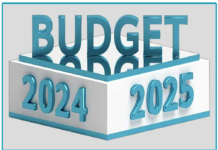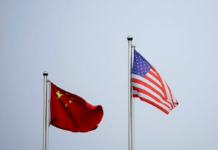In the annals of Indian political history since its hard-fought independence, a striking anomaly persists: no single party or pre-poll coalition has ever clinched a majority of the nationwide vote in the 17 national elections spanning from 1951-52 to 2019. Even the formidable Indian National Congress, endowed with the legacy of the freedom struggle and a formidable organizational machinery, fell short of the 50 percent mark in the country’s inaugural post-independence poll. Surprisingly, a majority, 55 percent, of the electorate threw their weight behind an array of opposition factions during India’s maiden parliamentary democratic exercise.
This curious electoral landscape, shaped by a plurality-based mechanism, bestowed upon the Congress party a staggering three-quarters of the seats in the first Lok Sabha, tallying 364 out of 489. However, had India adopted a proportional representation system, the Congress would have secured only 220 seats, necessitating post-poll alliances to cobble together a working majority government.
India’s political framework, largely modelled on its erstwhile colonial master Britain, mirrors a parliamentary democracy, featuring a Cabinet government helmed by a prime minister drawn from the majority party or coalition in the legislature, with robust accountability to Parliament. The electoral process itself, mirroring the British prototype, entails the election of members to the Lok Sabha from 543 single-member constituencies across the vast expanse of the nation, with victory conferred upon the candidate garnering the largest share (plurality) of the votes in each constituency.
For four decades following independence, the Indian political landscape was dominated by the Congress party until the late 1980s, with its zenith manifested in December 1984 when it clinched a whopping 48 percent of the popular vote, securing an imposing parliamentary majority of nearly four-fifths of the Lok Sabha.
Yet, this electoral system, favouring the frontrunner party with the largest slice of the popular vote, often yielded resounding legislative mandates, even when such mandates were borne out of slender pluralities, rendering India’s democracy susceptible to the spectre of the “tyranny of the majority” – not the tyranny of the populace per se, but of whoever commands the parliamentary helm.
The 16th general election in 2014 marked a seismic shift in India’s political landscape as Narendra Modi’s Hindu nationalist Bharatiya Janata Party (BJP) surged to power. Contesting in 428 out of 543 constituencies, the BJP breached the majority threshold in the Lok Sabha, securing victory in 282 constituencies, primarily concentrated in the northern and western regions of the country, thus clinching an outright majority in Parliament’s lower house for the first time since 1984.
The BJP’s ascendancy was underscored by its nationwide vote share of 31.3 percent, which translated into a slim majority of 52 percent in the Lok Sabha (augmented by an additional 6 percent secured by allied parties). In 2019, the BJP further consolidated its position, witnessing a surge in its vote share to 37.4 percent, culminating in Modi’s return to power with an enhanced majority of 303 seats, bolstered by allied parties garnering an additional 8 percent of the popular vote.
However, the euphoria surrounding Modi’s electoral triumphs belied a disconcerting trend: the erosion of parliamentary democracy. Modi’s reverence for the democratic institution was called into question as his second term unfolded, marked by the unabashed steamrolling of contentious legislations through Parliament in a brute-majoritarian fashion. The passage of the Jammu and Kashmir Reorganization Act in August 2019 and the Citizenship Amendment Act in December 2019 epitomized a departure from democratic norms, signalling the consolidation of executive power at the expense of parliamentary scrutiny.
The decline of Parliament’s centrality in India’s political framework predates Modi’s ascent to power but has been exacerbated during his tenure, particularly in his second term (2019-2024). Parliament has been reduced to a rubber-stamping entity, its sessions truncated to a bare minimum, with opposition voices stifled and dissent quashed through mass suspensions. Modi’s leadership, purportedly visionary, has eclipsed institutional checks and balances, culminating in the emasculation of India’s parliamentary democracy.
Unlike autocratic predecessors driven by personal aggrandizement, Modi’s leadership is emblematic of an ideological project spearheaded by the Hindu nationalist conglomerate led by the Rashtriya Swayamsevak Sangh (RSS), of which he is a longstanding adherent. Parliament, in this milieu, serves as a mere echo chamber, legitimizing executive fiat orchestrated by the cabal of Modi and his chief enforcer, Amit Shah.
The waning efficacy of India’s parliamentary democracy is further underscored by institutional failings. The Rajya Sabha, India’s indirectly elected upper chamber, akin to its British counterpart, lacks the teeth to curb majoritarian excesses, with the BJP consolidating its grip on the chamber. Meanwhile, the apex judiciary, entrusted with safeguarding democratic principles, has exhibited acquiescence to executive overreach, evident in its rulings validating contentious legislations and ceding to Hindu nationalist aspirations.
The relocation of India’s Parliament from its historic abode to a garish new complex symbolizes the hollowing out of democratic institutions, underscoring the imperative of a robust electoral challenge to the Modi-led personality cult and the spectre of majoritarianism. However, the fragmented and leaderless opposition, grappling with internal schisms, appears ill-equipped to mount a credible challenge, leaving India’s parliamentary democracy teetering on the brink of irrelevance. In the absence of a concerted effort to resuscitate democratic norms and uphold institutional integrity, the cavernous new Parliament risks devolving into a mere facsimile, bereft of substantive democratic engagement, serving as a poignant testament to India’s democratic regression.






